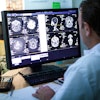
The first performance measurement year in the Merit-Based Incentive Payment System (MIPS) was 2017, the results of which will be used to determine Medicare payment adjustments in 2019. This was considered a transition year that allowed practices to pick their pace, ranging from a streamlined path that would simply avoid penalties in 2019 to full participation that could generate positive payment adjustments in 2019.
The bar has been raised for 2018 performance measurement, and it will continue to be raised again in 2019 as the program reaches full implementation as required by law. This article summarizes the changes for 2018 that will affect the performance of radiology practices as they work to maximize their reimbursement in 2020.
Final score
The minimum requirement for 2018 to avoid a 2020 payment penalty of 5% is to reach the performance threshold of 15 points, an increase from the three-point threshold of 2017 (which avoided a 4% penalty). Practices that are made up of 15 or fewer eligible clinicians (ECs) (known as small practices) will receive five bonus points to start with, and practices that treat "complex patients" will also receive five bonus points. This latter bonus could be available to radiation oncologists.
Maximizing the final score will earn a positive payment adjustment in 2020. The payment adjustment is a budget-neutral calculation that determines a scaling factor to be applied to the 5% maximum adjustment, which is an increase from the 4% limit in 2017.
As in 2017, a final score of 70 or more points will be considered "exceptional performance," which will earn an additional payment adjustment ranging from 0.5% up to 10% times the scaling factor.
The final score is determined by a weighted average of the four performance categories. For 2018, the nominal value for each category is shown in the following table.
| Values for MIPS categories | |
| Category | Contribution to final score |
| Quality | 50% |
| Advancing Care Information (ACI) | 25% |
| Improvement Activities (IA) | 15% |
| Cost | 10% |
However, the weight of each of these categories could change for a variety of reasons. For example, small practices will be exempt from Advancing Care Information (ACI), with the result that Quality becomes worth 85% of their final score. Let's review the details of each performance category for 2018.
Quality
Quality continues to be the most important, highest-weighted category. The zero-weighting of other categories can add to its nominal weight of 50%. For 2018, a full 12 months of data must be submitted in the Quality category, rather than the 90-day period that was allowed in 2017. (The ACI and Improvement Activities categories maintain the 90-day reporting requirement.)
A minimum of six measures must be reported. If more than six are reported, only the best six scores will be used. Data must be gathered from at least 60% of all patients in the practice, an increase from the 50% requirement in 2017.
Each measure is worth 10 points, with certain exceptions:
- Measures that do not meet the "data completeness criteria" of 60% described above will only be worth one point each. However, a small practice will earn three points per measure in this case.
- Measures that are "topped out" will be worth a maximum of seven points each, under a policy that is new for 2018. The six topped-out measures for 2018 are listed below. Topped-out measures are those whose median performance is 95% or higher, and they will be removed and scored on a four-year phasing out timeline.
| Topped-out measures for 2018 | |
| Measure | Description |
| 21 | Perioperative care: Selection of prophylactic antibiotic -- first- or second-generation cephalosporin |
| 224 | Melanoma: Overutilization of imaging studies |
| 23 | Perioperative care: Venous thromboembolism (VTE) prophylaxis (when indicated in all patients) |
| 262 | Image confirmation of successful excision of image-localized breast lesion |
| 359 | Optimizing patient exposure to ionizing radiation: Utilization of a standardized nomenclature for CT imaging description |
| 52 | Chronic obstructive pulmonary disease (COPD): Inhaled bronchodilator therapy |
New for 2018 are bonus points for showing improvement in Quality performance over the previous year. This measurement will be performed by the U.S. Centers for Medicare and Medicaid Services (CMS), and up to 10 percentage points will be awarded in the performance category, provided there is sufficient data in the two performance periods.
Advancing Care Information
There are few changes to the basic requirements for reporting under ACI, although there are some new opportunities to earn bonus points. These include the following:
- A 10% bonus is available for using only the 2015 edition of certified electronic health record technology (CEHRT). Using the 2014 edition is permissible for reporting but will not qualify for a bonus.
- Up to 10% of the performance score can be earned for reporting to any single public health agency or clinical data registry.
- A 5% bonus score is available for submitting to an additional public health agency or clinical data registry not reported under the performance score.
- Additional Improvement Activities (IA) are eligible for a 10% ACI bonus if CEHRT is used to complete at least one of the specified activities.
An exemption from ACI for any reason would result in a shift of the category's 25 percentage points to the Quality category, thereby making Quality worth 85% of the final score. This would be the case for radiologists who qualify as hospital-based or "nonpatient-facing." Those definitions have not changed for 2018, except that services in off-campus hospital outpatient departments (POS 19) will now be included in the determination. Other reasons for exemption are as follows:
- Small practice of 15 or fewer eligible clinicians
- EC practicing in an ambulatory surgery center
- EC whose electronic health record system was decertified
- Other significant hardships available by application to CMS by December 31 of the performance year
Improvement Activities
The basic IA reporting requirements are unchanged, but 20 new activities have been added to the inventory for a total of 112 possible activities from which to choose. As noted above, the selection of some Improvement Activities will also qualify for a bonus under ACI. It is also important to note that under group reporting, only one eligible clinician in the group is required to perform the activity for the entire group to get credit.
A maximum of 40 points are needed to reach the full 15% contribution toward the final score from any combination of four medium- or two high-weighted activities. An important rule for radiologists who qualify as nonpatient-facing is that the value of each activity is doubled, so that at most two medium- or one high-weighted activity is needed to earn 40 points. This same level of reporting applies to small practices.
Radiologists might want to consider using the Radiology Support, Communication, and Alignment Network (R-SCAN) program offered by the American College of Radiology (ACR) for their medium-weighted Improvement Activities. This has the added advantage of helping the practice prepare for the clinical decision-support requirement that Medicare will impose beginning in 2020.
Cost
While the proposed MIPS rules indicated that the Cost category would be zero-weighted (i.e., not counted for MIPS) in 2018 as it was in 2017, the final rule for 2018 indicates that Cost will be 10% of the MIPS final score. There is no separate reporting required, as the data are taken from the Medicare claims submitted routinely by the practice. There will be a 1 percentage point bonus available for improvement year over year, when sufficient data exist.
CMS will evaluate individual ECs and group practices on two measures in 2018:
- Total per-capita cost of care for attributed beneficiaries
- Medicare spending per beneficiary (MSPB)
According to Robert Still, executive director of the Radiology Business Management Association (RBMA), writing in the RBMA Practice Management forum, "RBMA is encouraging members to review prior year [Quality and Resource Use Reports (QRURs)] and review patients who have been attributed to their groups. It is recommended you strive to understand the variables that contributed to these patients being attributed to your tax ID under the PCP and Medicare spending per beneficiary attribution methodologies. Table 5 in the QRUR reports provides the detail of these attributions."
Reporting options and exclusions from MIPS
New for 2018 is the availability of virtual groups. This rule allows either individual eligible clinicians or groups of 10 or fewer ECs to unite with each other and report as a single group practice. The election period for participation as a virtual group in 2018 ended on December 31, 2017. The definition of nonpatient-facing ECs applies to virtual groups in the same way that it applies to other groups.
The low-volume threshold exempts individual ECs from any MIPS reporting. For 2018, the exemption applies to an EC with $90,000 or less in Medicare allowed charges (increased from $30,000), or an EC with 200 or fewer Medicare beneficiaries assigned to him or her (increased from 100 or fewer).
Conclusion
CMS provides a comprehensive fact sheet on its website, and the ACR has published a summary of the 2018 rules that is of special interest to radiologists.
Rebecca Farrington serves as the chief revenue officer for Healthcare Administrative Partners. She has more than 20 years of experience in healthcare sales and management roles, focusing on hospital-based and physician revenue cycle management.
The comments and observations expressed herein are those of the author and do not necessarily reflect the opinions of AuntMinnie.com.



















